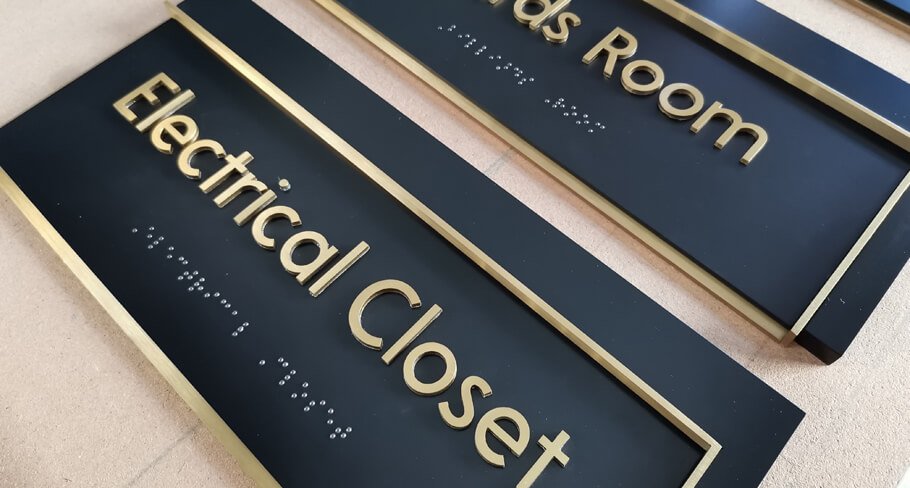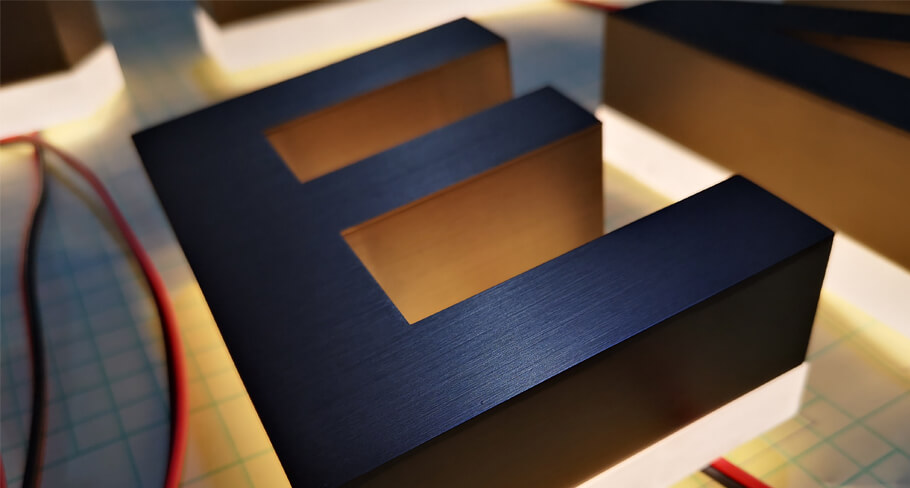Braille signage is a requirement for a building and public access, both accessible and navigational to individuals with disabilities are essential.
Before you make a purchase journey, we list some guidelines for new hands.
Is it necessary to install the braille signs?
Do I need to install the braille signs? The answer is YES. The reason mainly comes below.
The law about Disabilities Act
In 1984, at the meeting of The World Blind Union in Riyadh, Saudi Arabia proclaimed that October 15th of each year was the “White Cane Safety Day,” which made the legal regulation to enable the blind to participate in social activities equally. Its use has promoted courtesy and special consideration for the blind on our streets and highways.
Most of the government signed the law to protect the rights of blind people, and buildings need to install braille signage.
Failure to install braille signs by regulations is subject to corresponding penalties.
Equal civil rights for blind people
The World Health Organization estimates 40 to 45 million blind people globally, and low vision is three times that of the blind. About 140 million people, 75% or more than 100 million patients, can recover or improve their vision through surgery and refractive correction. 25% of low vision patients require inadequate care, such as wearing a visual aid and visual rehabilitation instrument.
Where are these braille signs to be installed?
Why should we consider the factors of the installation environment? It involves the below reasons.
The materials we will use
Metals will be better in higher-end applications or demanding environments with lots of weather exposure.
| Material | Type | Advantage | Common location | Durability |
| Acrylic | Plastic | High gloss, Lightweight | School and universities, hotels, and hospital | Indoor |
| Stainless steel | Metal | Affordable, Various colors | transit systems, prisons, sports facilities and hospitals | Outdoor |
| Aluminum | Metal | Lightweight, Affordable | School and universities, hotels, and hospital | Outdoor |
| Brass | Metal | Expensive, Luxury | transit systems, hotels, sports facilities and hospitals | Outdoor |
Production methods
Different materials will use different manufacturing processes.
Regarding acrylic tactile signs, the popular methods are Thermoforming, Routed &Raster, Photopolymer, and Injection, while for metal ADA signs, etching and cast are the main methods.
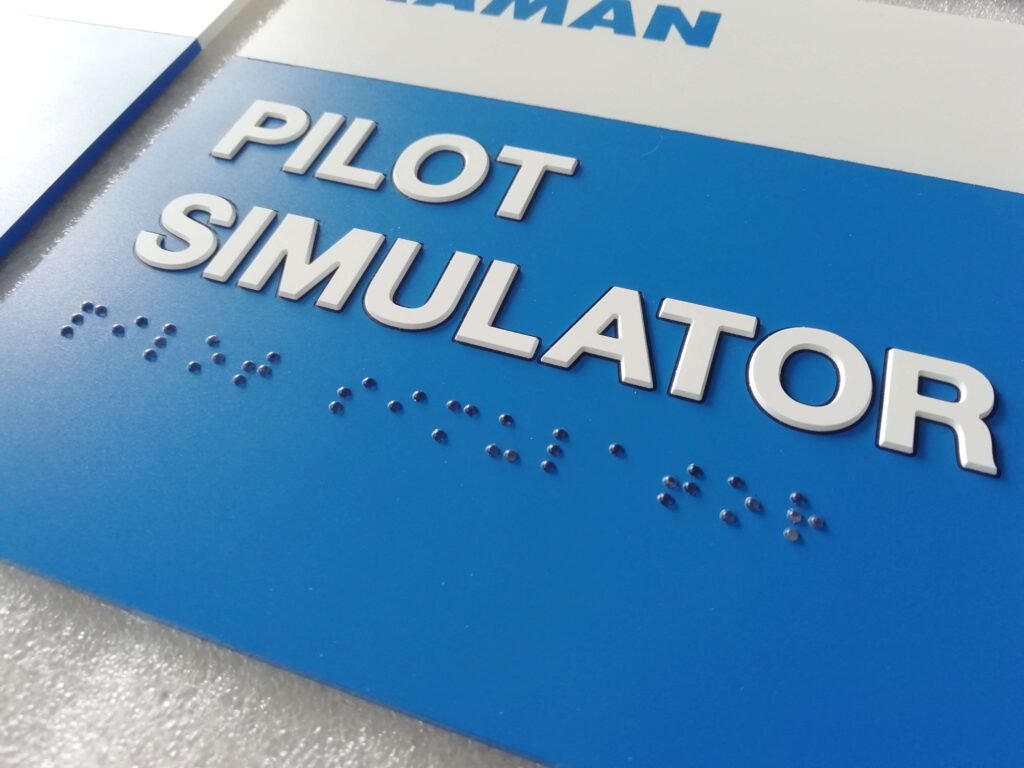
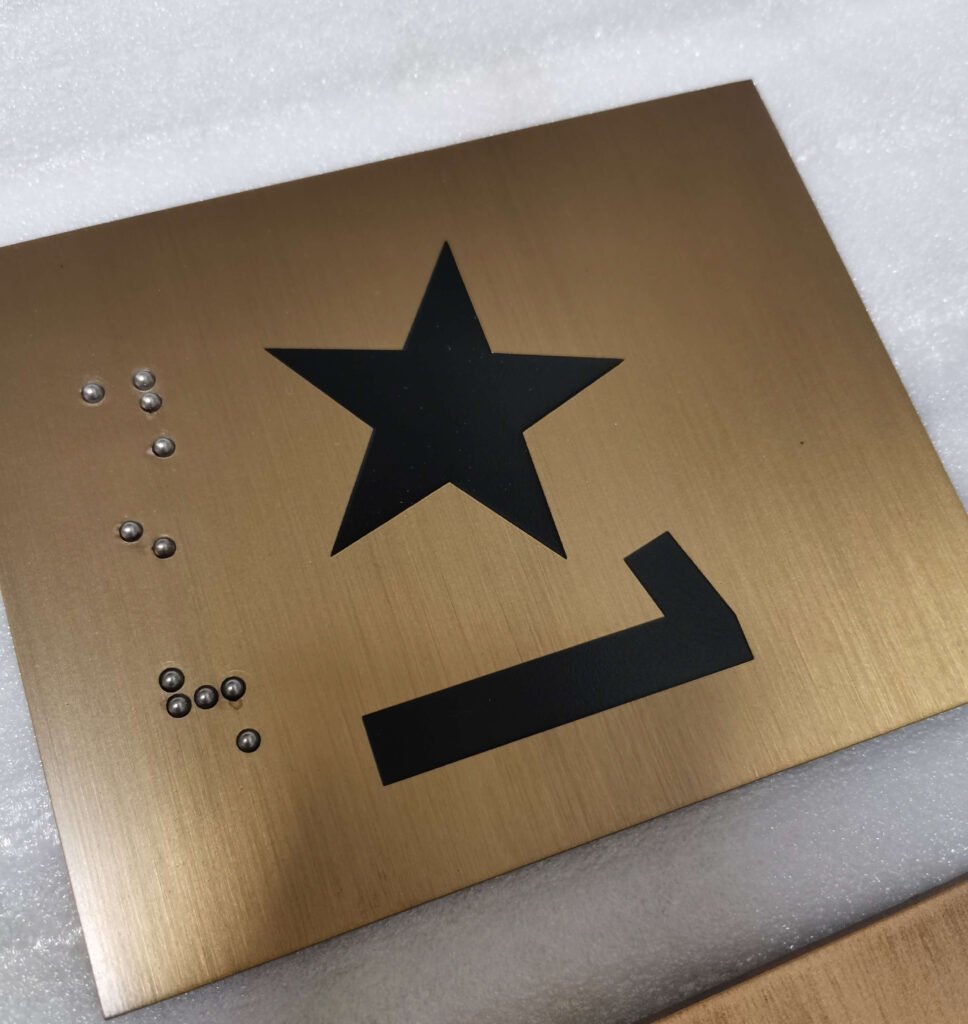
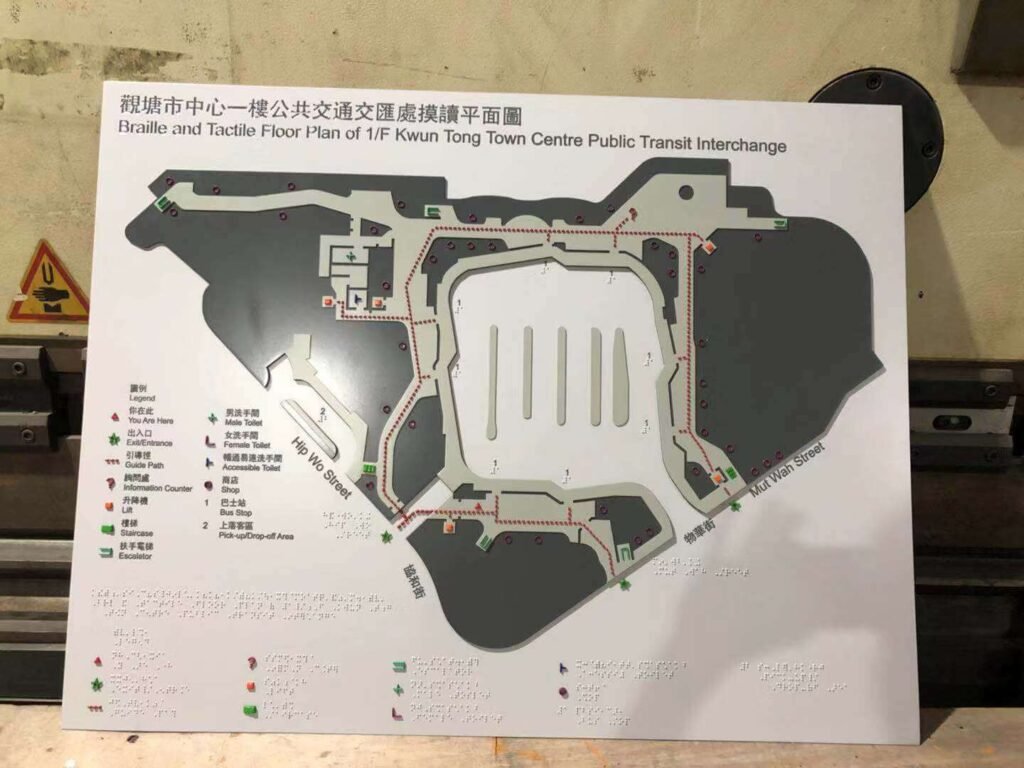
What’s the purchasing budget?
Custom braille signs are the prior option when your purchasing budget is sufficient. At the same time, it brings a lasting impression on your customers for your brand or products.
If the budget is limited, standard ADA signs are a good choice if they are in a small range or small quantities. 1pc shipping is acceptable on Amazon.
Custom ADA Tactile Signs Vs. Standard ADA Tactile Signs
a. Custom ADA Signs
Advantage: Custom tailor for your ADA signs project. It reflects your brand culture and philosophy and gives the passengers the last expression. No two are the same, and they can match your brand and logos well.
Most of them are room number ID ADA signs, directional ADA signs, room function ADA, etc.
MOQ is needed when purchasing the custom ADA signs.
Disadvantage: The cost will be much more expensive, as it needs to invest in the machines, purchase different thickness substrates, involve more production process, labor times, etc.
b. Standard ADA Tactile Signs
Advantage: Time and budget-saving. The layout is the same for the same type of ADA signs with tactile lettering; the production cost can be lower.
It is a time-effective and cost-effective way of installing standard ADA requirements. Most of them are restroom ADA, Exit ADA, Accessible ADA, etc.
Small quantities and instant delivery are available, as the bulk stock for standard ADA signs is available.
Disadvantage: It cannot reflect the corporate personality culture.
How long will the sign be up?
We will have to replace the signage when the brand upgrades, relocations, and expansions. Should we choose the luxury and long-life signage or the affordable solution, even the standard ADA signs?
If the replacement cycle of the signage is in a short time, most people will be more inclined to choose the plaques with an affordable and not very long lifespan, about 1-2years. On the contrary, they will prefer to choose more durable solutions.
Eventually, it will return to the choice of the product materials and production process.
- For interior signage, plastic and acrylic are affordable options. we don’t worry about the fades or rust in short times under outdoor weather exposure.
- For the exterior signage, we tend to use metal signs. Stainless steel, aluminum, brass, and Zinc are all options.
How balance the difference between the designer’s concepts and the physical signs can make?
Sign makers strictly manufacture the signs based on the artwork layout; however, sometimes, the design’s concepts cannot come true because sign fabrication methods limit the material. For example, we used the extruded acrylic or ABS for thermoforming braille signs rather than the cast acrylic.
Except for the fundamental principles, designers and sign makers should know the materials and the production process well. Both parties must agree on practical, budget-friendly, and feasible signage solutions.
Am I have intimate knowledge of the braille complaint locally?
Each country has the law regarding its braille signage standard, including the sign itself and installation requirements, but they are not interoperable.
The followings have relatively complete Braille standards for buildings and public access signage, and tactile braille signs have a broader scope of application.
- In the UK, we should follow the DDA compliance ( The Disability Discrimination Act 1995)
- In the US, ADA compliance ( Americans with Disabilities Act ) aims to stop discrimination for services and in the workplace against people with disabilities. While for California state, it needs to follow federal rules and Title 24 of the California Building Standards Code.
- All Australia Signs Braille signage complies with AS1428.1-2001 & BCA D3.6( Disability Access to Premises (Buildings) Standards (2010)

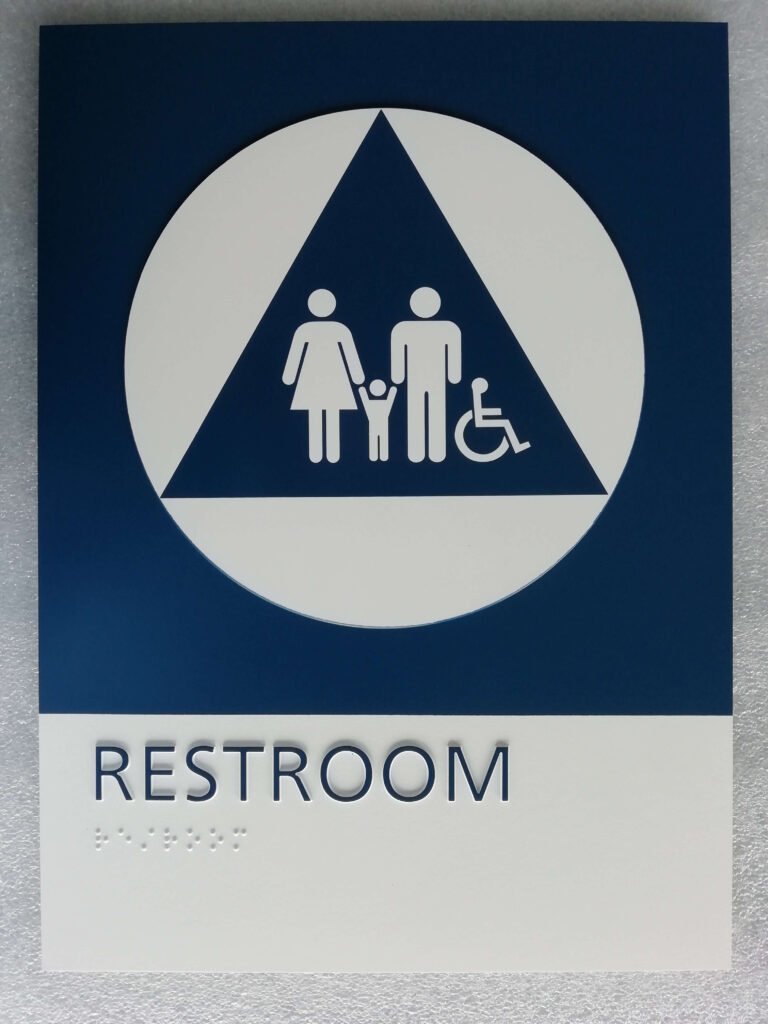
Free resources
2010 ADAAG standards: https://www.ada.gov/2010ADAstandards_index.htm
International Council on English Braille (ICEB) Braille Signage https://iceb.org/signage.html
Conclusion
Knowledge matters. Making custom signage is not easy, but purchasing can be easy and safe.
Contact us today for more information if you have additional questions about custom braille & tactile projects or compliance standards.

